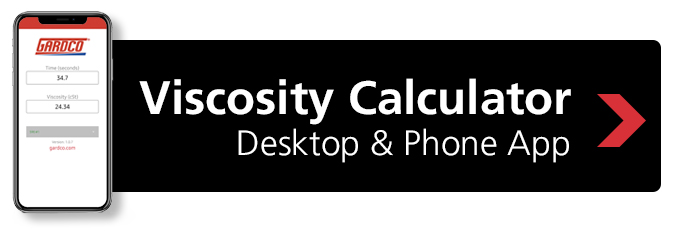EZ™ Zahn Viscosity Cups
Article No. 13790
17025 Certified EZ Cup #3
- EZ Zahn Viscosity Dip Cup #3
- 64-596 Centistoke Range
- 17025 Certification
Download Excel Viscosity Chart HERE
Features
- The EZ™ Viscosity Cups are produced to very close mechanical tolerance in elaborate jigs and fixtures, ensuring that each cup is correctly produced and are identical
- All parts of the flow cup are of stainless steel except for the name plate
- The formula for each cup of the series matches the applicable ASTM formula in D4212 at the recommended calibration level with 3% guaranteed tolerance that complies with & exceeds ASTM D4212
- Compatible to ASTM D1084 Viscosity of Adhesives and ASTM D816
- Calibration is traceable to the National Institute of Standards and Technology (NIST)
- Calibration and Certification procedures qualify under ISO/IEC 17025 as applicable
- Conversion table relating efflux time in seconds, to the nearest tenth of a second, to viscosity in centistokes included
- Orifices are machined rather than drilled to insure exact centering in the cup hemisphere base and a minimum of burr formation, insuring an orifice of specified length and a correct symmetrical efflux stream
- The support rods are offset from the side of the cup and secured to the cup sidewall below the cup rim, eliminating errors due to test material drainage from support surfaces
- The increased separation width of the support rods by over 20% and the lowering of weld to the cup provide best possible conditions for cleaning
- Viscosity Cups are non-returnable items and subject to final sale
Technical Attributes
-
- Data
-
Cup Number Seconds Range Centistoke Range Midrange Sensitivity ¹ Calibration Oil Number ² 1 40 to 60 10 to 36 1.3 G-10/19 2 20 to 60 19 to 156 3.3 G-60/117 3 12 to 60 64 to 596 10.5 G-200/458 4 10 to 60 79 to 784 13.9 G-200/458 5 10 to 60 161 to 1401 24.2 G-350/878 ¹ Stated as centistokes per second of efflux time.
² Centistoke values are nominal - actual values printed on labels
Standards
- ASTM D816
- ASTM D1084
- ASTM D4212
Procedure
- Select the proper number cup to be used from the Specification Table, which is dependent on the expected viscosity range of the material to be measured.
- Insure that the cup is clean and that there is no residual dried material in or around the orifice.
- Adjust the temperature, if necessary, of the test material.
- Completely immerse the cup into the material to be measured in a location free from bubbles or foam, holding the cup vertically by means of the stainless steel split key ring.
- Measure and record the temperature of the material that is encompassed by the cup.
- Hold cup vertically by inserting index finger into handle ring. In a quick, steady motion, lift the cup out of the sample material, starting the timer when the top edge of the cup breaks the surface. During the flow time, hold the cup no more than 6” above the level of the sample material.
- Stop the timer when the first definite break in the stream at the base of the cup is observed.
- Record the number of seconds of efflux time, temperature and the cup number. (Example: No. 2 EZ™ Dip Cup, 48.1 seconds at 25.1°C.) As an option to the preceding step, refer to the Viscosity Calculator App or conversion table for the cup to determine the centistoke viscosity for the measured efflux time in seconds and record this value and the measured temperature.
- Promptly clean the cup unless it will be used immediately for a rerun of the same material. (Use a length of nylon fishing line to clean the orifice.)
Downloads
Manuals
Knowledge
Want to learn the perfect process for using a viscosity cup? The article link below provides information on how to choose the right viscosity cup, how to measure efflux time, how to remove calibration oils and much more. - The Proper Process for Measuring with a Viscosity Cup
Accessories
Other Variations













